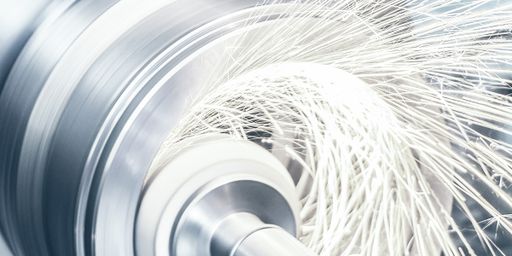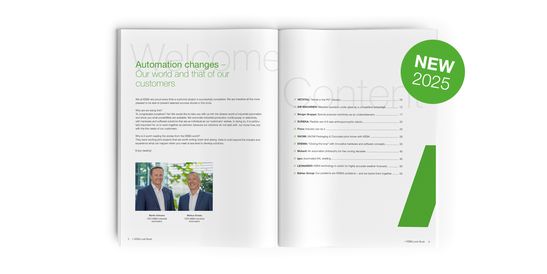- Industrial Automation Industrial Automation
- Handover Automation Handover Automation
- Energy Automation Energy Automation
- About KEBA About KEBA
- Innovations Innovations
- Values & Responsibility Values & Responsibility
- Compliance Compliance
- Current Job Openings Current Job Openings
- Working at KEBA Working at KEBA
- Apprenticeship at KEBA Apprenticeship at KEBA
- Internship and theses Internship and theses
-
Job Portal
Job Portal
- Contact form Contact form
- Service Service
- Purchasing Purchasing
- Supplier Registration Supplier Registration
- KEBA worldwide KEBA worldwide
- Why KEBA? Why KEBA?
- Industries Industries
- Products Products
- Solutions Digitalization Solutions Digitalization
- News & Blog News & Blog
- Service & Support Service & Support
- Banking Automation Banking Automation
- Logistics Automation Logistics Automation
- Digital Public Services Digital Public Services
-
Smart Handling Solutions
Smart Handling Solutions
- Lottery Solutions Lottery Solutions
- AI Assistance Solutions AI Assistance Solutions
- Overview Overview
- Mechanical engineering Mechanical engineering
- Machine tools Machine tools
- Plastics Plastics
- Robotics Robotics
- Intralogistics Intralogistics
- Wind energy Wind energy
- Turbo systems Turbo systems
- Sheet metal processing Sheet metal processing
- Overview Overview
- Kemro X Kemro X
- HMI HMI
- Controls Controls
- I/Os I/Os
- Servo controllers Servo controllers
- Motors Motors
- Spindles Spindles
- Magnetic bearings Magnetic bearings
- Software Software
- Safety technology Safety technology
- Overview Overview
- Simulation technologies Simulation technologies
- Optimized machine operation Optimized machine operation
- FAQs FAQs
- Overview Overview
- Technical support Technical support
- Repair & conversion Repair & conversion
- Spare parts Spare parts
- Trainings Trainings
- Web seminars Web seminars
- Documentations & Downloads Documentations & Downloads
- Why KEBA? Why KEBA?
- Solutions Solutions
- Parcel lockers Parcel lockers
- Software Software
- Service & Support Service & Support
- News & Blog News & Blog
- Why KEBA? Why KEBA?
- Solutions for... Solutions for...
- Products Products
- Service & Support Service & Support
- News & Knowledge News & Knowledge
- Become Partner Become Partner
- Why KEBA? Why KEBA?
- Heat Pump Heat Pump
- Biomass Biomass
- Software Software
- News News
- Service & Support Service & Support
- Overview Overview
- Injection Molding Injection Molding
- Blow Molding Blow Molding
- Software Software
- Drive Technology Drive Technology
- Overview Overview
- Integrated robotics Integrated robotics
- Safe robotics Safe robotics
-
drag&bot
drag&bot
- Overview Overview
- Pitch control systems Pitch control systems
- Yaw systems Yaw systems
- Spare parts service Spare parts service
- Overview Overview
- Mobile Mobile
- Wireless Wireless
- Stationary Stationary
- Product Configurator Product Configurator
- Overview Overview
- Control Cabinet Control Cabinet
- KeControl C5 KeControl C5
- KeControl C1 KeControl C1
- KeDrive D3 Control KeDrive D3 Control
- AI extension module AI extension module
- Overview Overview
- Product Configurator Product Configurator
- KeDrive D3 KeDrive D3
- KeDrive D3-AC KeDrive D3-AC
- KeDrive D5 KeDrive D5
- ServoOne ServoOne
- ServoOne TL ServoOne TL
- c-line Drives c-line Drives
- PitchOne PitchOne
- PitchMaster II+ PitchMaster II+
- Overview Overview
- Synchronous servo motors Synchronous servo motors
- KeDrive DMS2 KeDrive DMS2
- Pitch motors Pitch motors
- Overview Overview
- KeStudio KeStudio
- Robotics software Robotics software
- KePlast software KePlast software
- Overview Overview
- Know how Know how
- Accessibility Accessibility
- Sustainability Sustainability
- Safety Safety
- References References
- evo world | Overview evo world | Overview
- Cash recycling | R-line Cash recycling | R-line
- Cash recycling | F-line Cash recycling | F-line
- Account services | Non-cash Account services | Non-cash
- Access authorization system | KeBin Access authorization system | KeBin
- AI based assistance system | KeBob AI based assistance system | KeBob
- Overview Overview
- Click & Collect Click & Collect
- Logisticians Logisticians
- Object transfer Object transfer
- Parcel locker portfolio Parcel locker portfolio
- loxmate loxmate
- KePol FS-series KePol FS-series
- KePol Flex-series KePol Flex-series
- Overview Overview
- loxmate Software Suite loxmate Software Suite
- KePol Software Suite KePol Software Suite
- Software Development Kits Software Development Kits
- Overview Overview
-
AC charging stations AC charging stations
-
DC charging stations DC charging stations
-
Digital Solutions Digital Solutions
-
Charging management controller Charging management controller
-
Accessories Accessories

Mechanical Engineering

Machine tools

Sheet metal processing

Plastics

Robotics

Turbo systems

Wind Energy

Intralogistics

Banking Automation

Logistics Automation

Digital Public Services

Lottery Solutions

Key Management

Textile Dispensing Systems

Mobility Solutions

AI Assistance Solutions
-
Industrial Automation
Industrial Automation
- Why KEBA? Why KEBA?
- Industries Industries
- Products Products
- Solutions Digitalization Solutions Digitalization
- News & Blog News & Blog
- Service & Support Service & Support
-
Handover Automation
Handover Automation
-
Banking Automation
Banking Automation
- Why KEBA? Why KEBA?
-
Solutions
Solutions
- evo world | Overview evo world | Overview
- Cash recycling | R-line Cash recycling | R-line
- Cash recycling | F-line Cash recycling | F-line
- Account services | Non-cash Account services | Non-cash
- Access authorization system | KeBin Access authorization system | KeBin
- AI based assistance system | KeBob AI based assistance system | KeBob
- Service Service
- News & Blog News & Blog
- Logistics Automation Logistics Automation
- Digital Public Services Digital Public Services
-
Smart Handling Solutions
Smart Handling Solutions
- Lottery Solutions Lottery Solutions
- AI Assistance Solutions AI Assistance Solutions
-
Banking Automation
Banking Automation
- Energy Automation Energy Automation
-
About KEBA
About KEBA
-
Innovations
Innovations
-
Values & Responsibility
Values & Responsibility
-
Compliance
Compliance

Mechanical Engineering

Machine tools

Sheet metal processing

Plastics

Robotics

Turbo systems

Wind Energy

Intralogistics

Banking Automation

Logistics Automation

Digital Public Services

Lottery Solutions

Key Management

Textile Dispensing Systems

Mobility Solutions

AI Assistance Solutions



























































































